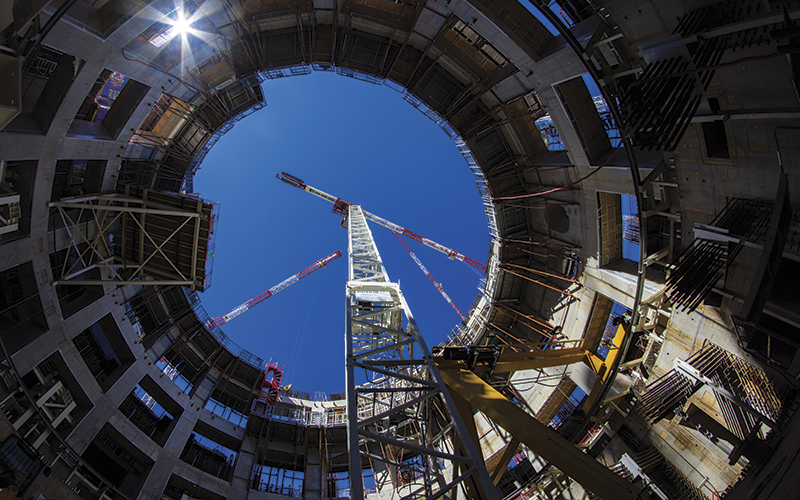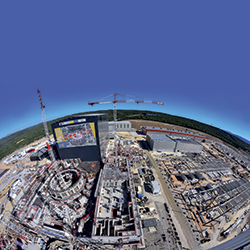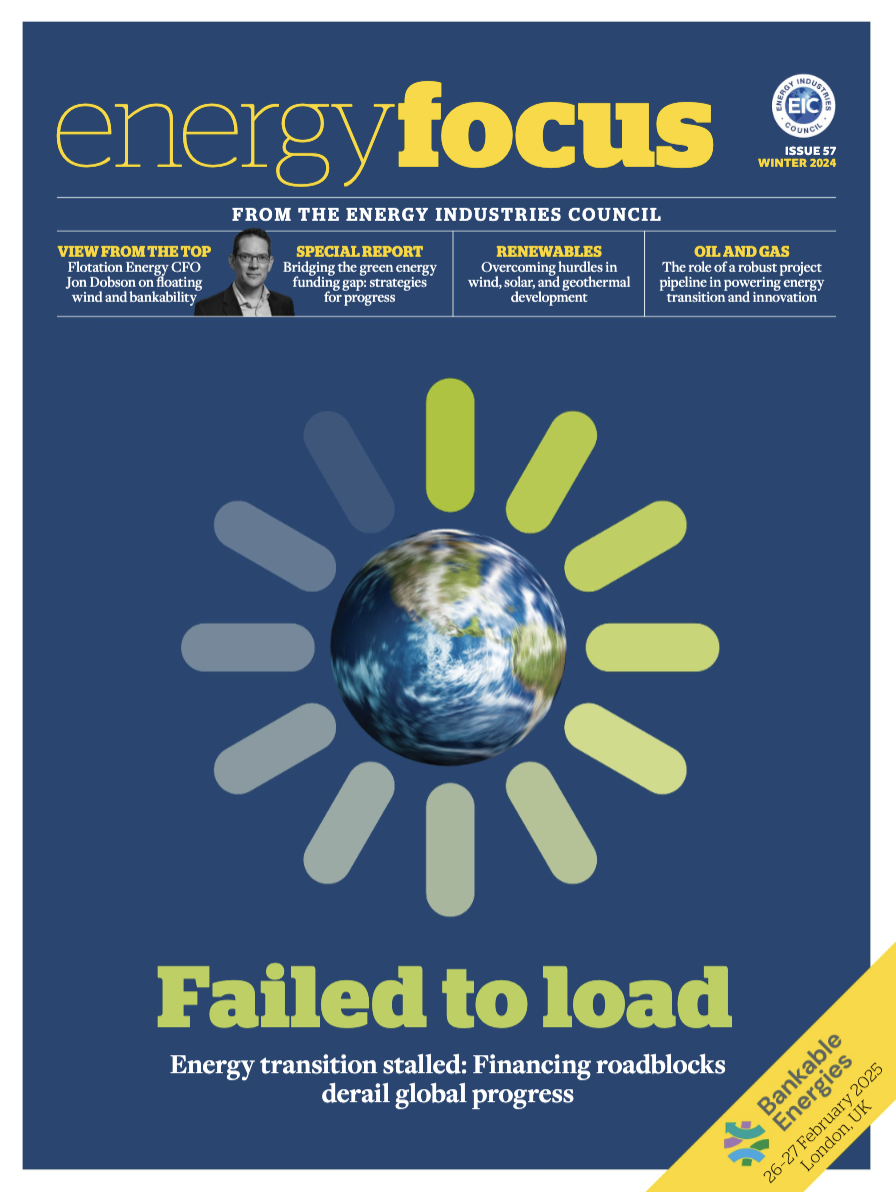Is fusion the fuel of the future?
As 35 countries collaborate to ‘build a star on earth’ in the South of France, Laban Coblentz gives an update on ITER – the world’s largest fusion experiment.

Fusion is the most prevalent source of energy in the universe, but stars create fusion at their core using gravitational force. Duplicating that natural phenomenon artificially on Earth in a commercial-sized Tokamak reactor requires staggering feats of engineering.
 Pushing science to its limits
Pushing science to its limits

Scientists must force positively charged hydrogen molecules to collide and fuse at ultra-high velocity and temperature. Superconducting magnets weighing hundreds of tonnes and as large as 24 metres in diameter must be placed with near-millimetric precision in order to confine the superheated plasma in a tightly woven, donut-shaped magnetic cage inside a giant vacuum vessel. The magnets will be supercooled with helium to –269˚C, the temperature of interstellar space. A few metres away, the plasma will be heated to 150 million ˚C, 10 times hotter than the core of our sun, making it the hottest point in the universe. – forcing The science and engineering feats demanded by the International Thermonuclear Experimental Reactor (ITER) machine push the limits of materials science, robotics, remote handling, vacuum systems, cryogenics, electromagnetics, and other fields. Adding to this complexity is the unique arrangement for funding and procurement: the countries involved contribute 90% of their funding in the form of components. The million-plus parts of this ultra-complex device will be sourced from all over the world, and every interface must fit perfectly.
Power in partnership
As ITER Director-General Bernard Bigot recently said, ‘The ITER project is built on this condition: if our partnerships perform poorly, every interface is threatened, the project is impacted, and everyone is negatively affected, however, if our partnerships perform well, each partner contributes its expertise, we all learn from each other, the interfaces are well-managed, the project succeeds, and everyone wins.’ For ITER to succeed, disciplines such as project management, risk management and systems engineering have to perform extraordinarily well. The ITER agreement purposefully called for this complexity, because each country involved wanted to learn from the other and to share its own expertise.
Moving towards First Plasma
ITER reports to its stakeholders routinely on a pre-agreed set of technical milestones, mapped to the master project schedule. For the past two years, every milestone has been met, and the project has stayed on schedule and on budget. ‘First Plasma’, the event that will mark a fully operational machine, is targeted for December 2025. That milestone will be followed by a staged series of experimentation and additional assembly phases, to culminate in full deuterium-tritium fusion in 2035.
The ITER worksite is buzzing with activity..The gigantic assembly hall, where arriving components are to be pre-assembled before being painstakingly placed into the Tokamak, dominates the landscape. Pieces of the cryostat, the 30-meter-diametre refrigerated vessel that will house the Tokamak, have been arriving from India and are being assembled by a renowned team of German welders. Spools of superconductor are being shaped into magnets in the Poloidal Field Coil building. Week after week, giant components arrive at the Marseille harbour and make their way to the site. The cryogenics plant, magnet conversion facility, radiofrequency building, and electrical switchyard are all taking shape. And at the centre of the complex, flanked by the tritium recycling plant and a diagnostics building, the massive form of the ITER bioshield is slowly rising, level upon level.
The way to new energy
Concerns about the effects of Brexit, which will see the UK withdraw from Euratom – the organisation that governs the participation of the European Union and Switzerland in the ITER – have caused no panic at the project. As with other transitions that can cause support for ITER to fluctuate at the political level, ITER’s senior management keeps a steady focus on what they can control: project performance.
Why? Because the stakes are so high. Fusion holds the promise of a transformational energy legacy for generations to come: a clean, safe and virtually limitless source of energy, capable of baseload power generation with enough fuel to power human society for millions of years. No other energy source can make that claim.
And unlike any other science endeavour in history, fusion has a six-decade track record of international collaboration, transcending the Cold War and other past and current political divides. ITER’s stakeholders understand that the ITER mission – demonstrating the feasibility of magnetic confinement fusion at full scale – is a gateway step for the commercial deployment that will follow. For the thousands of committed ITER contributors, whether at the worksite in Provence or in hundreds of companies, laboratories, and universities across the globe, the strong belief is that the payoff will be worth every bit of the effort.
By Laban Coblentz, Head of Communications and External Relations, ITER Organization






Follow us
Advertise
Free e-Newsletter